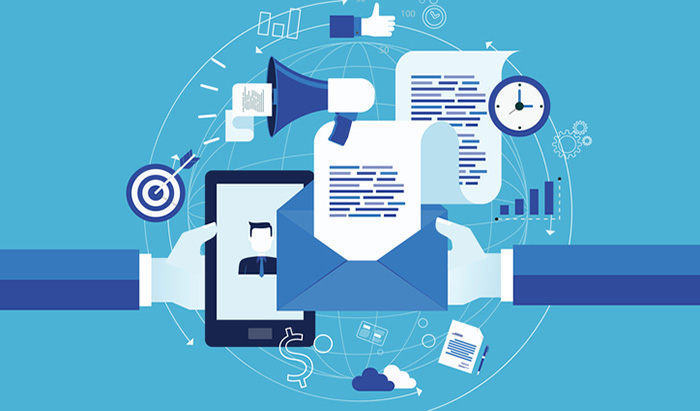In today’s competitive business environment, customer engagement is more crucial than ever. Engaging with customers effectively not only boosts satisfaction but also drives loyalty and long-term success. Understanding and implementing the right customer engagement model can significantly enhance your customer care strategy. This blog explores various customer engagement models, their benefits, and how to optimize them for the best results.
Understanding Customer Engagement Models
Customer engagement models are frameworks designed to enhance the interaction between a business and its customers. They encompass strategies and techniques that aim to build stronger relationships and improve customer satisfaction. By choosing the right engagement model, businesses can tailor their approach to meet customer needs more effectively.
The Traditional Customer Engagement Model
The traditional customer engagement model is often characterized by direct, one-on-one interactions between customers and service representatives. This model relies heavily on face-to-face or phone communications and is commonly used in industries where personal service is paramount.
Pros:
- Builds strong, personal relationships.
- Provides immediate, personalized feedback.
Cons:
- Can be time-consuming and resource-intensive.
- May not scale well with larger customer bases.
While this model has its advantages, it may not always be the most efficient approach in a digital age where customers expect quick and accessible service.
The Omnichannel Engagement Model
The omnichannel engagement model focuses on providing a seamless customer experience across multiple channels, including phone, email, social media, and chat. This model integrates various touchpoints to ensure that customers receive consistent service regardless of the channel they choose.
Benefits:
- Delivers a cohesive experience, enhancing customer satisfaction.
- Allows customers to switch channels without losing context.
By leveraging an omnichannel approach, businesses can cater to the diverse preferences of their customers and ensure that they receive consistent service throughout their journey.
The Personalized Engagement Model
Personalization is at the heart of the personalized engagement model. This approach uses data and insights to tailor interactions to individual customer preferences and behaviors. Techniques such as targeted communications, personalized recommendations, and customized offers are employed to create a more relevant and engaging experience.
Techniques for Personalization:
- Segmenting customers based on behavior and preferences.
- Sending personalized email campaigns and offers.
- Using customer data to recommend relevant products or services.
Case Study: Companies like Amazon and Netflix excel in personalization by analyzing customer behavior and providing recommendations that resonate with individual preferences.
The Data-Driven Engagement Model
In the data-driven engagement model, businesses use data analytics to guide their customer engagement strategies. By analyzing customer behavior, purchase history, and feedback, companies can make informed decisions and tailor their approach to meet specific needs.
Tools and Technologies:
- Customer Relationship Management (CRM) systems.
- Analytics platforms (e.g., Google Analytics, Tableau).
- Data visualization tools.
This model enables businesses to optimize their engagement efforts by identifying trends and making data-driven decisions.
The Proactive Engagement Model
Proactive customer engagement involves anticipating customer needs and addressing potential issues before they arise. This model focuses on preventive measures, such as offering solutions or support before a customer reaches out with a problem.
Strategies:
- Implementing predictive analytics to foresee customer issues.
- Offering proactive support and guidance based on customer data.
- Sending alerts or notifications about potential problems.
Benefits:
- Enhances customer satisfaction by resolving issues before they escalate.
- Reduces the volume of reactive support requests.
By being proactive, businesses can create a more seamless and satisfying experience for their customers.
The Reactive Engagement Model
In contrast to the proactive model, the reactive engagement model involves responding to customer issues as they arise. This approach is often used when immediate solutions are required, and it relies on addressing problems after they have been reported.
When to Implement:
- For situations where immediate responses are needed.
- In industries where problems are often unpredictable.
Limitations:
- Can lead to customer frustration if issues are not resolved quickly.
- May require significant resources to handle high volumes of support requests.
While reactive strategies are sometimes necessary, relying solely on them can result in missed opportunities to prevent issues and enhance the customer experience.
The Community-Based Engagement Model
The community-based engagement model emphasizes building and nurturing customer communities. This approach involves creating platforms where customers can interact, share experiences, and provide feedback.
Examples:
- Online forums and discussion boards.
- Social media groups and communities.
- User-generated content campaigns.
By fostering a sense of community, businesses can enhance customer loyalty and gain valuable insights from user interactions.
The Automated Engagement Model
Automation plays a significant role in the automated engagement model. This approach uses tools such as chatbots and automated responses to handle routine inquiries and provide support.
Advantages:
- Increases efficiency and reduces response times.
- Allows businesses to handle a high volume of interactions without additional resources.
Drawbacks:
- May lack the personal touch of human interactions.
- Can be limited in handling complex or nuanced issues.
Best Practices:
- Ensure that automated responses are clear and helpful.
- Provide easy access to human support when needed.
Integrating AI and Machine Learning in Engagement Models
AI and machine learning are transforming customer engagement by enabling businesses to offer more personalized and efficient service. AI-driven tools can analyze customer data, predict behavior, and automate interactions.
How AI Enhances Engagement Models:
- Personalizing recommendations and content.
- Automating responses and support.
- Analyzing large volumes of data for insights.
Case Studies: Companies like Google and IBM are leveraging AI to enhance customer engagement through innovative solutions and tools.
Measuring Engagement Success
To optimize customer engagement strategies, it’s essential to measure their effectiveness. Key performance indicators (KPIs) provide insights into how well engagement models are performing.
KPIs to Track:
- Customer Satisfaction Score (CSAT).
- Net Promoter Score (NPS).
- Customer Lifetime Value (CLV).
- Response and resolution times.
Tools for Tracking:
- CRM systems.
- Analytics platforms.
- Feedback surveys.
By monitoring these metrics, businesses can identify areas for improvement and make data-driven adjustments to their engagement strategies.
Optimizing Engagement Strategies
Continuous optimization is key to maintaining effective customer engagement. Regularly reviewing and refining your strategies can help ensure they remain relevant and effective.
Techniques for Optimization:
- Implementing feedback loops to gather insights from customers.
- Testing and experimenting with different approaches.
- Staying updated on industry trends and best practices.
Success Stories: Companies that excel in optimization often share their experiences and strategies, providing valuable lessons for others.
Challenges and Solutions
Implementing and maintaining effective engagement models can present challenges. Common issues include integrating new technologies, managing large volumes of interactions, and balancing automation with personalization.
Solutions:
- Investing in training and development for staff.
- Using scalable technologies that can grow with your business.
- Continuously reviewing and adapting strategies based on performance and feedback.
Optimizing your customer engagement model is crucial for delivering exceptional customer care and driving business success. By understanding and implementing the right engagement models, businesses can enhance customer satisfaction, build stronger relationships, and stay competitive in today’s dynamic market. Whether you choose a traditional, omnichannel, personalized, or automated approach, the key is to align your strategy with your customers' needs and preferences. Regularly review and refine your engagement strategies to ensure they remain effective and relevant. With the right model in place, you’ll be well on your way to achieving outstanding customer engagement and care.
Q&A
What is a customer engagement model?
A customer engagement model is a framework or strategy that businesses use to interact with and engage their customers. It outlines how a company will communicate with customers, address their needs, and enhance their overall experience. Effective engagement models help build stronger customer relationships, increase satisfaction, and drive loyalty.
Q2: Why is customer engagement important?
Customer engagement is crucial because it directly impacts customer satisfaction and loyalty. Engaged customers are more likely to return to a business, make repeat purchases, and recommend the company to others. High levels of engagement can lead to increased revenue, positive brand perception, and a competitive advantage in the market.
Q3: What are some common customer engagement models?
Some common customer engagement models include:
- Traditional Engagement Model: Direct, personal interactions with customers.
- Omnichannel Engagement Model: Seamless service across multiple channels.
- Personalized Engagement Model: Tailored interactions based on customer data and preferences.
Q4: How do I choose the right customer engagement model for my business?
Choosing the right engagement model depends on your business goals, customer preferences, and the nature of your industry. Consider factors such as the level of personalization you want to offer, the channels your customers use, and the resources available for managing interactions. It may be beneficial to combine elements from different models to create a strategy that best suits your needs.
Q5: How can I measure the success of my customer engagement model?
To measure the success of your customer engagement model, track key performance indicators (KPIs) such as:
- Customer Satisfaction Score (CSAT): Measures overall satisfaction with your service.
- Net Promoter Score (NPS): Gauges customer loyalty and likelihood to recommend your business.
- Customer Lifetime Value (CLV): Estimates the total value a customer brings over their lifetime.
- Response and Resolution Times: Tracks how quickly issues are addressed and resolved.
Q6: What are some common challenges in implementing engagement models?
Common challenges include integrating new technologies, managing high volumes of customer interactions, and balancing automation with the need for personalized service. Other issues may include ensuring consistency across channels and adapting strategies based on changing customer preferences and market trends.
Get in Touch
Website – https://www.webinfomatrix.com
Mobile - +91 9212306116
Whatsapp – https://call.whatsapp.com/voice/9rqVJyqSNMhpdFkKPZGYKj
Skype – shalabh.mishra
Telegram – shalabhmishra
Email - info@webinfomatrix.com

%20(1).jpg)
.jpg)









 English (US) ·
English (US) ·